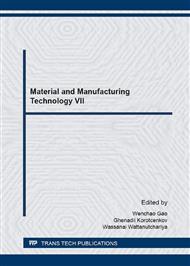p.235
p.242
p.248
p.253
p.261
p.266
p.271
p.276
p.281
Compressive Strength Development of High Strength High Volume Fly Ash Concrete by Using Local Material
Abstract:
This paper presents a research to produce high strength concrete incorporated with fly ash as cement replacement up to 50% (high volume fly ash concrete) by using local material. The research is conducted by testing the strength development of high volume fly ash concrete at the age of 14 days, 28 days and 56 days. As a control mix, the compressive strength of Ordinary Portland Cement (OPC) concrete without fly ash is used. Both concrete mixtures use low w/c. consequently, they lead to the use of 1 % superplasticizer to reach sufficient workability in the process of casting. The specimens are concrete cubes with the dimension of 15 cm x15 cm x 15 cm. The totals of 24 cubes of HVFA concrete and OPC concrete are used as specimens of testing. The compressive strength design of concrete is 45 MPa and the slump design is ± 10 cm. The result shows that the compressive strengths of OPC concrete at the age of 14 days, 28 days, and 56 days are 38 MPa, 40 MPa, and 42 MPa. Whereas the compressive strength of HVFA concrete in the same age of immersing sequence are 29 MPa, 39 MPa, and 42 MPa. The result indicates that HVFA concrete can reach the similar compressive strength as that of normal concrete especially at the age of 56 days by deploying low water cement ratio.
Info:
Periodical:
Pages:
271-275
Citation:
Online since:
September 2016
Authors:
Price:
Сopyright:
© 2016 Trans Tech Publications Ltd. All Rights Reserved
Share:
Citation:


